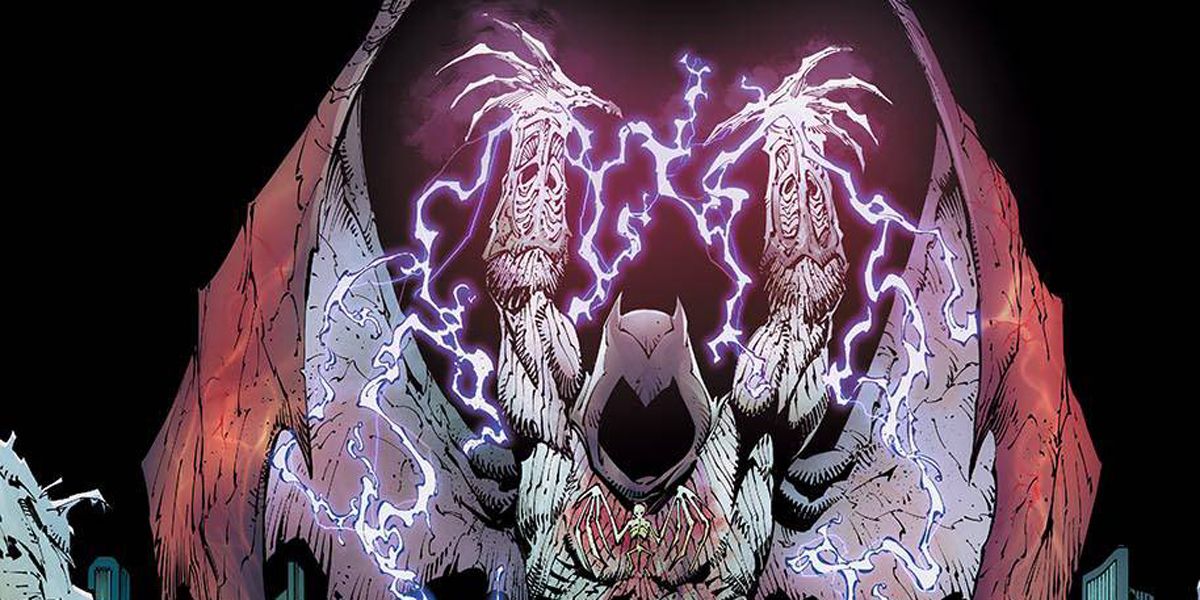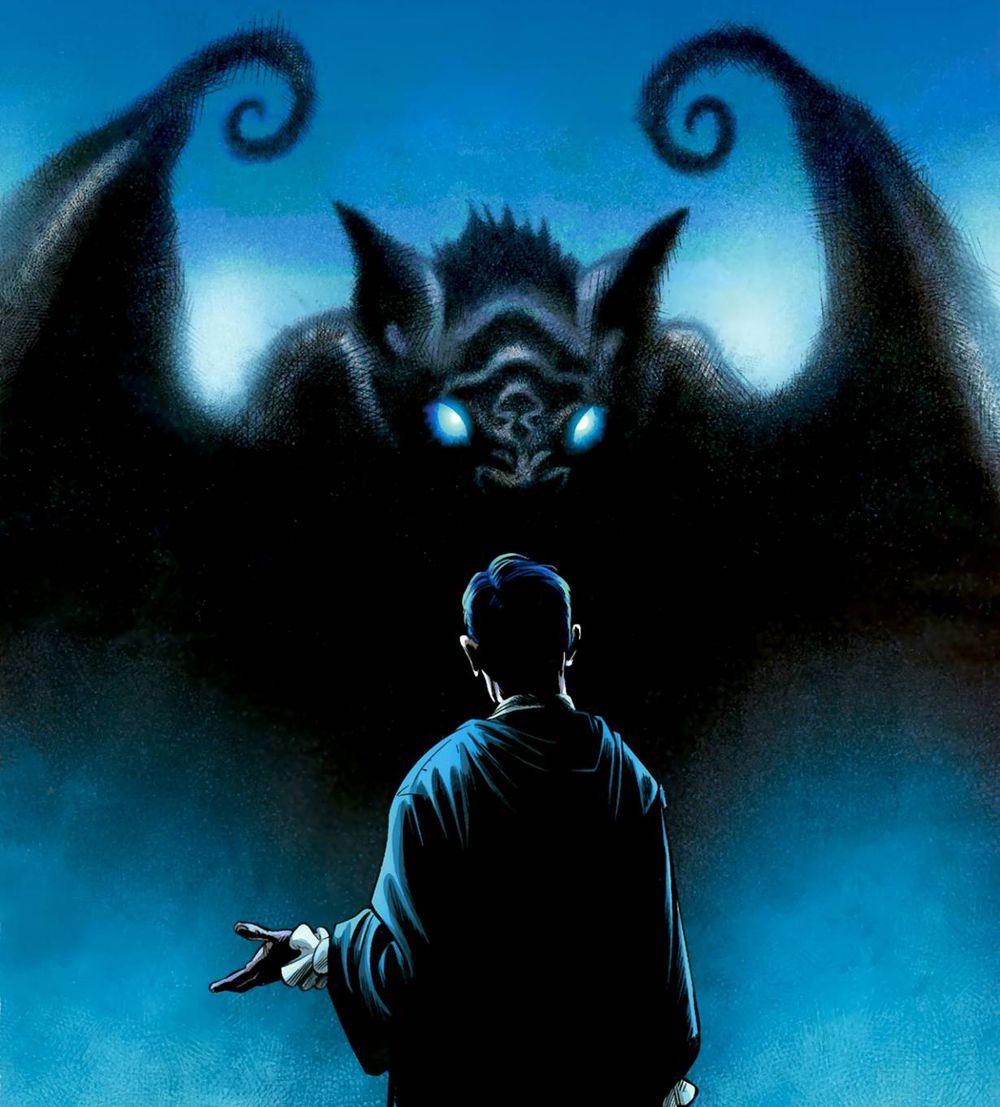DC Comics has been beating the drum for an invasion by something sinister since at least June, with the release of Dark Days: The Forge. Even as the heroes of the DC Universe fought mecha for Mongul's pleasure on Warworld and grappled with millennia-old mysteries on Blackhawk Island in Dark Nights: Metal #1, readers have braced for the arrival and seven evil Batmen from the Dark Multiverse -- but also something more.
RELATED: DC's Nth Metal Revelations Open a Multiverse of Possibilities
In that first issue of Metal, by writer Scott Snyder and artist Greg Capullo, we learned that something is a name familiar to Batman readers: Barbatos, whose dark history with Bruce Wayne was central to writer Grant Morrison's run, but can be traced back even further. However, the demon's presence isn't confined to comics; it's lurked for centuries in legend and in fiction.
In medieval Jewish tradition, as well as in Islamic and Western occultism, King Solomon possessed a magical signet ring known as the Seal of Solomon that allowed him to imprison and command demons. Among those was Barbatos, who was listed as an archduke of Hell in the mid-17th century magical text the Lesser Key of Solomon. He's said to possess the ability to decipher the language of animals, reconcile friends and tell the future. According to the Dictionnaire Infernal, an early 19th century book on demonology, he's a dark version of Robin Hood. His biography is brief but bizarre; however, when he appears in media (most often in anime and RPGs), Barbatos is typically little more than a Satan analog.
But in DC Comics lore, he's far better known as the god-monster whose rise to prominence began nearly a decade ago in writer Grant Morrison's mega-arc that encompassed Batman R.I.P., Final Crisis and The Return of Bruce Wayne. However, Barbatos' entry into the DC Universe came even earlier, and on two fronts: in the 1990 Batman storyline "Dark Knight, Dark City," and in 1994's The Books of Magic #5, from DC's Vertigo imprint.
That latter version, which bears little if any resemblance to the Barbatos lurking at the edges of the DCU, was introduced by writer John Ney Rieber and artist Peter Snejbjerg as a powerful demon whose goal was to trick young Timothy Hunter, Earth's greatest magician, into becoming his slave. However, the Barbatos depicted in "Dark Knight, Dark City" planted the seeds for Morrison's Hyper-Adapter and may have paved the way to the Dark Multiverse.
RELATED: Meet the Horrific Robins of the Batman Who Laughs
In that story, which unfolded in Batman #452-454 by writer Peter Milligan and Kieron Dwyer, The Riddler discovers the journals of Jacob Stockman, which relate how he, Thomas Jefferson and other figures gathered in 1764 Gotham to summon a fearsome demon Barbathos (as it's spelled in the story). When Jefferson realized the required human sacrifice wasn't merely symbolic, he attempted to flee the cellar beneath a barn used for the ritual, only to be faced with an enormous shadowy bat-creature outside. Certain they'd succeeded in summoning the demon, the men fled, sealing the barn, with the intended sacrifice inside with the demon. Centuries later, The Riddler is convinced Barbatos is still within the barn, and is manipulated by the demon to lure in Batman. As Barbatos reveals to the Dark Knight, he's influenced the growth and events of Gotham from his cellar prison, and even orchestrated the murders of Thomas and Martha Wayne, in effect creating Batman.
It's a story that's unusual enough to draw the attention of Morrison, who added his own flourishes more than a decade later for his own tale of a Batman sent back through time by Darkseid, and pursued by the ancient Apokoliptian monster the Hyper-Adapter. In this telling, Bruce Wayne's 18th-century ancestor Thomas Wayne is part of the cult that attempts to summon Barbatos to the cellar beneath that Gotham barn in a quest for eternal life. However, it's not Barbatos that appears but instead the Hyper-Adapter. While the other cultists fled in terror, Thomas remained behind and was locked inside with the demon. Completing the ritual, Thomas Wayne gains what he'd sought, eternal life, and becomes Doctor Simon Hurt, a Batman antagonist who's been characterized as the Devil (both figuratively and literally).
RELATED: Dark Nights: Metal #1 Annotated, From Gotham's Volcano to Sandman
Transformed into a giant bat, the Hyper-Adapter was ultimately slain in the Stone Age by Vandal Savage, and its hide worn in that time by a stranded Bruce Wayne. That, it seemed, was the end of Hyper-Adapter, but certainly not of Barbatos.
The bat-demon is mentioned again last month in Dark Nights: Metal #1, by Scott Snyder and Greg Capullo, as a "dark-horned god of nightmare," a "great evil" as old as the universe that's targeted Batman for thousands of years from the shadows of the Dark Multiverse. Carter Hall notes in his journal that, "Barbatos has been after its target since the dawn of man. It first saw him in a final moment of crisis," which suggests Bruce first caught his attention as he slipped through time, possessed by the Hyper-Adapter. Of course, Barbatos might have seen Bruce before that, as Wayne is also the accidental creator of the Bat Tribe, which, as revealed in Dark Days, attempted to summon bat-demon into the DC Universe, leading to the plot of Dark Nights: Metal.
Now, it seems, Barbatos is about to rise again from the Dark Multiverse, and he isn't alone: As Hall warned in his journal, he brings with him "a dark army," the evil Batmen first teased by DC in June. However, what Barbatos has planned for Bruce Wayne and the DC Universe isn't quite clear just yet.
We'll undoubtedly learn more when Dark Nights: Metal #2, by Snyder and Capullo, goes on sale on Wednesday.



